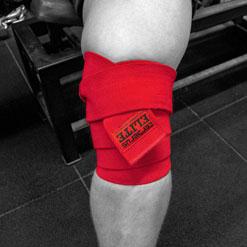
The debate between cardio and strength training has long been a topic of discussion in the fitness community. Many strength athletes worry that incorporating cardiovascular conditioning into their regimen might compromise muscle mass and strength gains. However, when strategically implemented, cardio can enhance overall fitness, aid recovery, and even support strength and muscle growth. This guide aims to debunk common myths surrounding cardio for strength athletes and presents effective cardiovascular conditioning strategies that bolster strength gains without sacrificing muscle.
The Cardio Myth In Strength Training:
Myth: Cardiovascular exercise leads to muscle loss and undermines strength gains.
Fact: Strategic cardio can improve heart health, increase blood flow to muscles, and enhance recovery, contributing to better performance and muscle growth when balanced with strength training.
Benefits Of Cardio For Strength Athletes:
- Enhanced Recovery: Low-intensity cardio increases blood circulation, helping to remove waste products and deliver nutrients to muscles, speeding up the recovery process.
- Improved Efficiency: Cardiovascular conditioning improves the heart's efficiency, potentially increasing stamina during high-intensity strength workouts.
- Fat Loss Without Muscle Sacrifice: Properly timed and moderated cardio sessions can aid in fat loss while preserving muscle mass, leading to a more defined physique.
Effective Cardio Strategies For Strength Athletes:
1. Low-Intensity Steady-State (LISS) Cardio;
- Description: LISS involves performing cardio at a low to moderate intensity for a prolonged period, typically 30-60 minutes.
- Benefits: Enhances recovery, improves aerobic base without significantly impacting muscle mass.
- Implementation: Incorporate LISS sessions on rest days or after strength training to aid recovery.
2. High-Intensity Interval Training (HIIT);
- Description: HIIT consists of short, intense bursts of activity followed by rest or low-intensity periods, usually completed in 20-30 minutes.
- Benefits: Boosts metabolism, enhances cardiovascular fitness, and can be muscle sparing with shorter, less frequent sessions.
- Implementation: Limit HIIT sessions to 1-2 times per week to prevent interference with strength gains.
3. Circuit Training With A Focus On Conditioning;
- Description: Combines resistance training with high-intensity cardio exercises in a circuit format, blending strength and cardiovascular work.
- Benefits: Maintains muscle engagement while improving cardiovascular health.
- Implementation: Use bodyweight exercises or light weights with minimal rest between sets to keep the heart rate up.
Balancing Cardio With Strength Training:
- Timing Is Key: Schedule cardio sessions to minimize impact on strength training, such as after strength sessions or on separate days.
- Monitor Intensity & Volume: Adjust the intensity and volume of cardio based on training cycles, increasing during off-season or deload weeks and reducing during peak strength training phases.
- Nutritional Adjustments: Ensure your diet compensates for the increased energy expenditure from cardio, focusing on adequate protein intake and overall caloric needs to support recovery and muscle growth.
Cardiovascular conditioning doesn't have to be at odds with strength and muscle building. By debunking the myths and understanding how to effectively integrate cardio into a strength training program, athletes can enjoy the holistic benefits of improved endurance, efficient recovery, and even enhanced muscle definition. Customizing your conditioning approach allows you to support your strength goals, ensuring a well-rounded and effective training regimen.
Incorporating cardio into a strength athlete's routine requires careful planning and consideration, but when done correctly, it can lead to superior overall fitness outcomes. By choosing the right type of cardio, timing it appropriately, and adjusting nutritional intake, strength athletes can optimize their performance, achieve greater muscle definition, and maintain a healthy cardiovascular system.















































